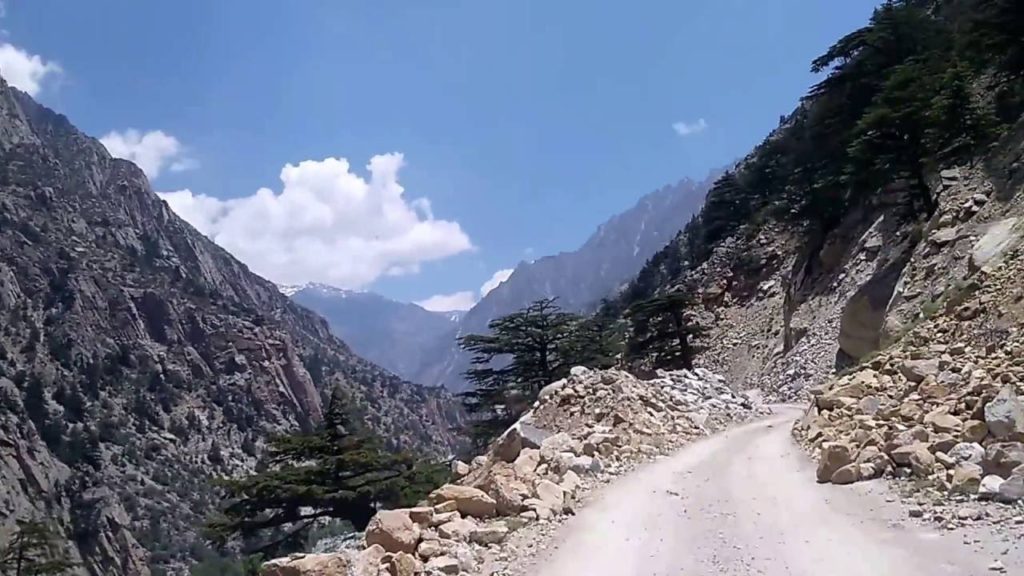
The Nelong Valley of Uttarkashi district in Uttarakhand is bordered by China. Being strategically sensitive, this area has been declared as Inner Line Area. Here the army is vigilant at every step and is prohibited from going without permission. Sumla, Mandi, Neelapani, Tripani, Pidia and Jadung are the last posts on the border. However, there was a time when the Nelong Valley was buzzing with Indo-Tibetan traders. Dorji (traders of Tibet) used to go to Uttarkashi via Sumla, Mandi, Nellong’s Grangali with wool, leather garments and salt & Then used to hold haats in Uttarkashi. For this reason Uttarkashi is also known as Badahat (big market). After selling the goods, Dorji used to return from here with items like oil, spices, pulses, jaggery, tobacco etc.
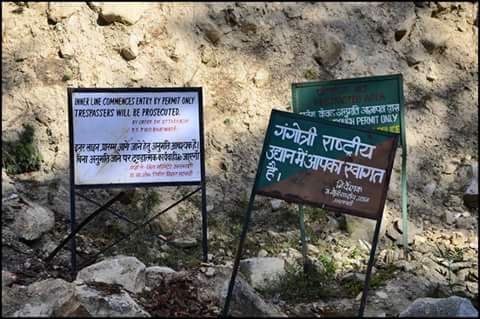
Gertangali is the only major evidence of this trade. In the 17th century, the Pathans of Peshawar prepared the world’s most dangerous path by cutting the steep hills of the Himalayas in the Nelong Valley of Uttarkashi district at an altitude of 11 thousand feet above sea level. Five hundred meters long, this wooden stepway (Gartangali) made of wood has been a witness to Indo-Tibet trade. Before 1962, Indo-Tibet traders used to travel through this route by loading goods on yaks, horse-mules and sheep. The army also used this route for ten years after the Indo-China war.
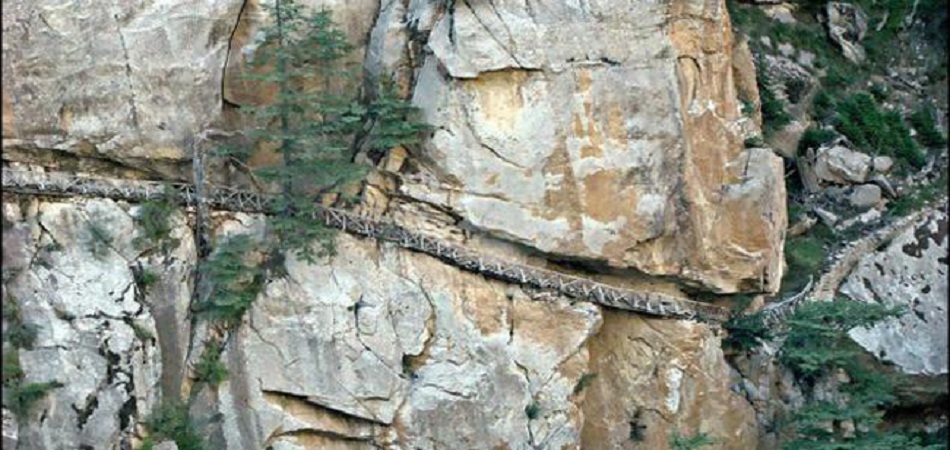
After the 1962 Indo-China war, the movement of non-soldiers into the Nelong Valley of Uttarkashi district was banned. From here, the villagers were evacuated and settled in Harsil-Bagori, Dunda, etc. However, the locals were later allowed to go there once a year for religious activities. A few years ago, it was decided that with the permission of the administration, tourists could visit the Nelong Valley, but they would not stay there at night. To get to Nelong Valley, it is very important to make a pass from the office of Gangotri National Park. About 8 km before Gangotri, the route diverges from Bhairavghati to the Nelong Valley.
Tourists can also view rare wildlife in the valley like snow leopard, brown bear, reindeer, bharal, guldar etc.
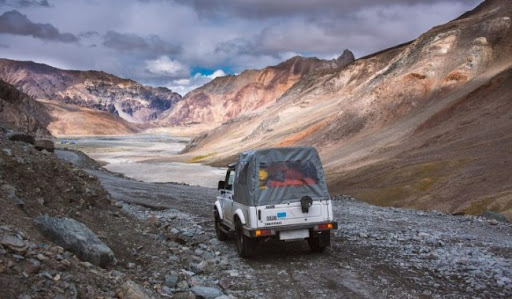
Tourists arriving on the Safari of Nelong Valley can reach Jolly Grant Dehradun by air and Rishikesh and Dehradun by rail. One has to cover 275 km from Rishikesh to Gangotri Highway via Bhambhati via Chamba and Uttarkashi and 250 km from Dehradun to Mussoorie, Chinyalisaur, Uttarkashi to Bhairon Ghati. From here, there is an arrangement to go 23 km to Nelong and 15 km beyond this to Jadhung village by vehicles approved by the Forest Department.
Gangotri National Park website to make online permits http://swsuttarkashi.com/Home/DashBoard
Places to See
Gartangli
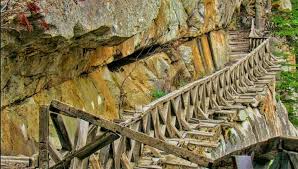
Gertangali is the only major evidence of the trade. In the 17th century, the Pathans of Peshawar prepared the world’s most dangerous path by cutting the steep hills of the Himalayas in the Nelong Valley of Uttarkashi district at an altitude of 11 thousand feet above sea level. Five hundred meters long, this wooden stepway (Gartangali) made of wood has been a witness to Indo-Tibet trade. Before 1962, Indo-Tibet traders used to travel through this route by loading goods on yaks, horse-mules and sheep. The army also used this route for ten years after the Indo-China war.
Memorial Point
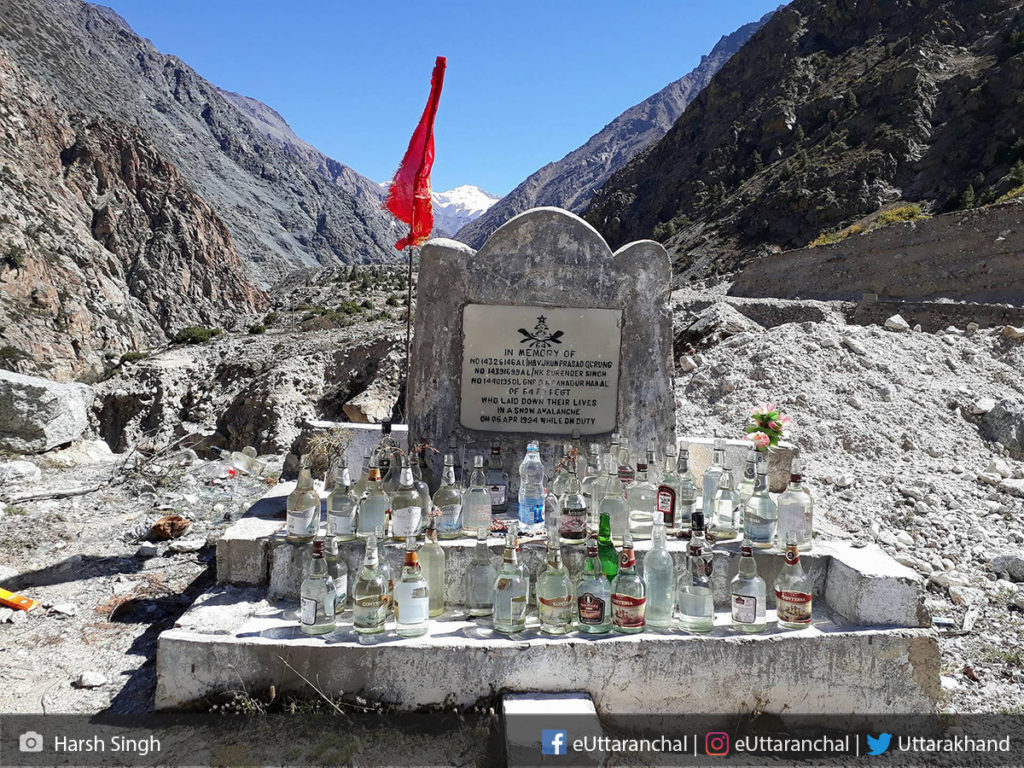
It is said that behind every tradition, an interesting story is hidden. Especially in Uttarakhand, you will get to hear such stories on rumble. There are many traditions which are being followed till date. One such tradition also plays a soldier performing duty on the Nelong Valley in Uttarkashi district. This tradition makes people realize that our heroic sons go through the hardships for our safety. The Indo-Tibetan Border Police and the army in the Nelong Valley are shocked. Because of which the soldiers of the country remain stationed here on duty. Summer is not as difficult as dooty here. But there is heavy snow in the winter. Due to this, the soldiers have to face many difficulties. Even the soldiers stationed here have to drink water by melting ice. The unique tradition played here is also associated with water.
The incident dates back some 22 years, when three soldiers of the Indo-China FD Regiment in the Nelong Valley of Uttarkashi district were buried under a glacier while wandering in search of water for drinking. See the faith of the soldiers and paramilitary personnel towards those martyrs that even today they do not forget to keep a bottle full of water on their memorial before proceeding to the border. The jawan says that many times the martyred soldiers come in their dreams and ask for water to drink. On 6 April 1994, soldiers of the 64 FD Regiment were patrolling Havildar Jhoom Prasad Gurung, Nayak Surendra and Din Bahadur. Two kilometers before Nelong, the soldiers went to a glacier in Dhumka to drink water. It is said that suddenly the glacier broke and all three soldiers were buried under it.
His memorial was built near Dhumka in memory of these martyred soldiers. The soldiers stationed on the Nelang border claim that the martyred soldiers come to their dreams many times and ask for drinking water. That is why every soldier and officer keeps water bottles filled in the memorial of the martyred soldiers while coming to Nelong Valley. It is believed that sometime after this incident, in the dream of all those soldiers who came here to patrol, those young men came and started asking for water. After which ITBP built a memorial of those soldiers here. You can call it superstition or faith but it can be said that this memorial and practice gives us a sense of what circumstances our youngsters fight for us.
Janak Taal -Jadung Gaon

This is an extremely difficult but rewarding trek, only advised for pro-trekkers to undertake. Around 8 – 9 kilometers from Jadung there is a beautiful, almost heavenly lake called the Janak Taal. Open valley merging with sky at the horizon and shimmering lake reflecting the clear sky, that’s the breathtaking beauty of this quaint place. Due to complications of permit and risky roads, only a few could witness this magic of Nature.
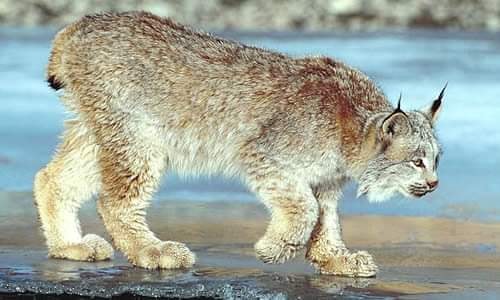
The rarest species of wild cat, first found sometime back in Nelong Valley of Gangotri National Park.
Do you know the name of the links? If you don’t know then we are telling you. The cat has so far been seen only in Europe and Siberia. This cat weighs about 30 kg. This cat has appeared in India for the first time. The special thing is that this cat has appeared in Uttarakhand itself. Pictures of the cat have been captured in CCTV. This cat has been seen in Gangotri National Park. In scientific language the name of this cat is ‘Lynx’. Pictures of this rare creature have been captured by cameras installed in the Nelong Valley by the Forest Department and the Wildlife Institute of India. WII Doctor S. Satya Kumar says that this cat has appeared for the first time in Uttarakhand. The special thing is that this cat has also appeared for the first time in India.
Until now, this creature was seen only in Tibet, Siberia and Europe. Scientists say that this cat is on the verge of extinction. Scientists in Europe and Siberia say that this cat now looks like no. But the sight of this cat in Uttarakhand has created a wave of happiness among scientists once again. Of the many subspecies of lynx, the Eurasian lynx is the largest in size. The length of this wild cat is 80 to 130 centimeters. Along with this, its height is 60 to 75 centimeters. This cat weighs between 18 and 30 kg. The color of this cat is gray and red. In addition, there are black spots in its skin. Earlier, the Argali sheep was seen in Gangotri National Park itself. Argali sheep are also on the verge of extinction.
After this, the meeting of the Lynx proves that the park’s eco-system is providing a better environment for wildlife. These organisms are said to be the largest in their species. Its special thing is that its tail is short. Also its works are high. There is a bunch of hair at the ends of the ears. Their large and padded claws prove to be helpful in walking in the snow. The lonely Lynx lives a mysterious life in the jungles. The special thing is that this creature can be found only with the help of camera trap and claw marks. This organism hunts deer and small creatures. However, this creature has been hunted all over the world. These organisms are on the verge of extinction due to poaching, habitat and lack of food.

